
Languedoc-Roussillon: A Mediterranean Gem in Southern France
Discover Languedoc-Roussillon: where Mediterranean beaches, historic treasures, and exquisite wines create an unforgettable French escape.
Nestled between the Pyrenees and the Mediterranean Sea, Languedoc-Roussillon is a region that boasts an impressive blend of natural beauty, historical richness, and culinary delights. This charming part of southern France is perfect for those seeking both relaxation and adventure. The region offers stunning beaches, rolling vineyards, and quaint medieval towns that are sure to captivate any visitor. Languedoc-Roussillon is home to several UNESCO World Heritage sites, including the iconic Pont du Gard and the historic city of Carcassonne. The region's diverse landscape makes it an ideal destination for outdoor enthusiasts, with opportunities for hiking in the Cévennes National Park, exploring the Canal du Midi, or enjoying water sports along the Mediterranean coast. Food lovers will be delighted by the local cuisine, which features fresh seafood, hearty stews, and world-famous wines. The region's vineyards produce a variety of wines, from robust reds to crisp whites, making it a paradise for wine connoisseurs. Whether you're wandering through the bustling markets, dining in a seaside restaurant, or sampling wines at a local vineyard, Languedoc-Roussillon offers a feast for the senses.
Local tips in Languedoc-Roussillon
- Visit the medieval city of Carcassonne early in the morning to avoid crowds.
- Try the local specialty, Cassoulet, a hearty stew perfect for a taste of regional cuisine.
- Rent a bike to explore the scenic Canal du Midi, a UNESCO World Heritage site.
- Don't miss the vibrant markets in Narbonne for fresh produce and local delicacies.
- Plan a day trip to the Pont du Gard, an ancient Roman aqueduct that offers stunning views and historical insight.
Languedoc-Roussillon: A Mediterranean Gem in Southern France
Nestled between the Pyrenees and the Mediterranean Sea, Languedoc-Roussillon is a region that boasts an impressive blend of natural beauty, historical richness, and culinary delights. This charming part of southern France is perfect for those seeking both relaxation and adventure. The region offers stunning beaches, rolling vineyards, and quaint medieval towns that are sure to captivate any visitor. Languedoc-Roussillon is home to several UNESCO World Heritage sites, including the iconic Pont du Gard and the historic city of Carcassonne. The region's diverse landscape makes it an ideal destination for outdoor enthusiasts, with opportunities for hiking in the Cévennes National Park, exploring the Canal du Midi, or enjoying water sports along the Mediterranean coast. Food lovers will be delighted by the local cuisine, which features fresh seafood, hearty stews, and world-famous wines. The region's vineyards produce a variety of wines, from robust reds to crisp whites, making it a paradise for wine connoisseurs. Whether you're wandering through the bustling markets, dining in a seaside restaurant, or sampling wines at a local vineyard, Languedoc-Roussillon offers a feast for the senses.
When is the best time to go to Languedoc-Roussillon?
Iconic landmarks you can’t miss
Cité de Carcassonne
Discover the captivating history and stunning architecture of Cité de Carcassonne, a remarkable medieval fortress in the heart of France.
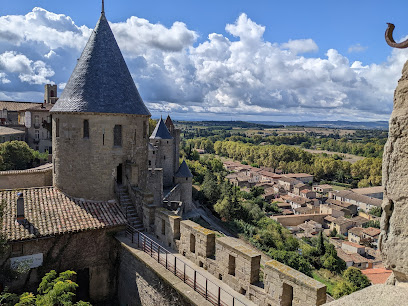
Pont du Gard
Explore the Pont du Gard, a UNESCO World Heritage Site, and marvel at its ancient Roman architecture amidst stunning natural beauty in southern France.

Jardin de La Fontaine
Discover the enchanting blend of history and nature at Jardin de La Fontaine in Nîmes, a tranquil park perfect for relaxation and exploration.

Haut-Languedoc Regional Natural Park
Explore the breathtaking Haut-Languedoc Regional Natural Park, a natural wonderland filled with scenic hikes, vibrant wildlife, and rich cultural heritage.
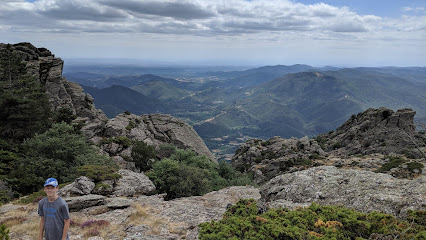
Royal Castle of Collioure
Explore the Royal Castle of Collioure, a historical gem offering stunning views and rich cultural heritage in the heart of the French Mediterranean.
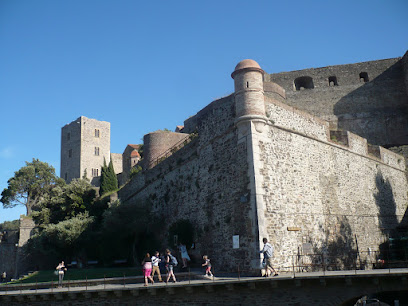
Salses Fortress
Explore the majestic Salses Fortress, a cultural and historical landmark showcasing stunning medieval architecture in the heart of southern France.
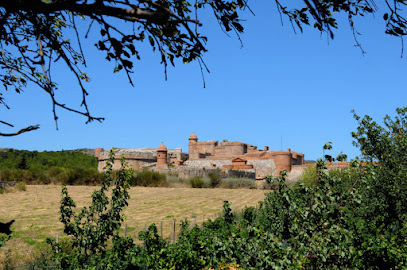
Château de Peyrepertuse
Discover the grandeur of Château de Peyrepertuse, a historic fortress offering breathtaking views and a glimpse into France's medieval past.
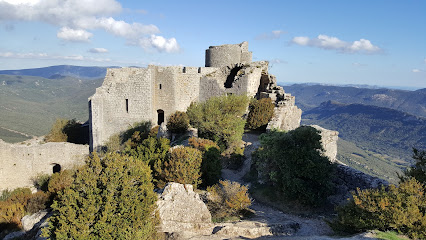
Château de Quéribus
Experience the grandeur of Château de Quéribus, a historical castle in Cucugnan with stunning views and rich medieval history that enchants every visitor.
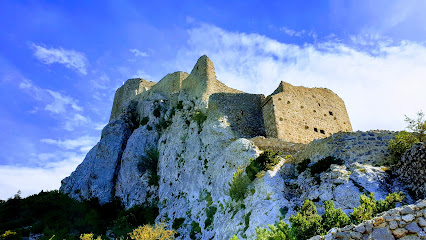
Les Quatre Châteaux de Lastours
Discover the captivating Quatre Châteaux de Lastours, a must-visit medieval fortress complex set in the scenic landscape of southern France.
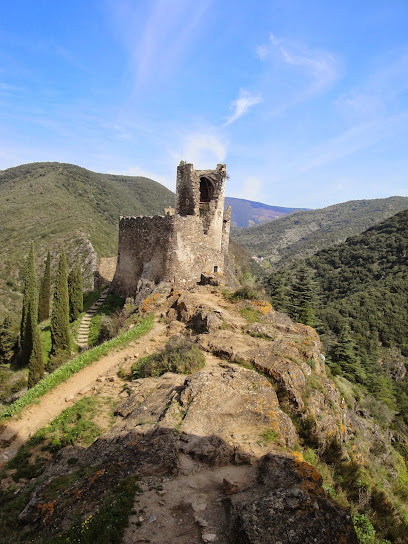
Castle Castelnou
Explore the enchanting Castle Castelnou, a historical gem in the heart of France, offering breathtaking views and rich medieval heritage.
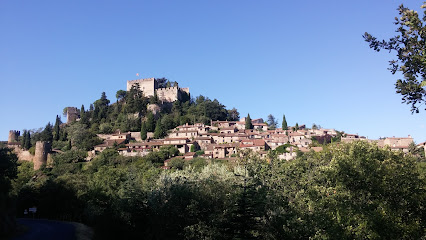
Château L'hospitalet Wine Resort Beach & Spa
Escape to Château L'Hospitalet: A luxurious wine resort and spa in the heart of Narbonne with stunning views and cultural experiences.

Château et remparts de la cité de Carcassonne
Explore the enchanting Château et remparts de la cité de Carcassonne, a UNESCO World Heritage site that showcases medieval architecture and rich history.
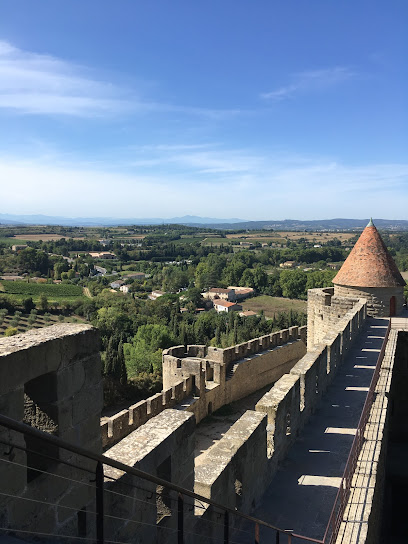
Château de Puilaurens
Explore the breathtaking Château de Puilaurens, a medieval marvel with stunning views and rich history in the heart of the Aude region.
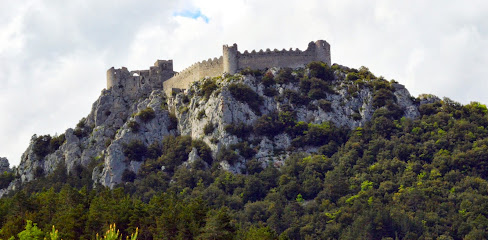
Portes Castle
Explore the historic Portes Castle, a stunning architectural marvel in southern France, surrounded by breathtaking landscapes and rich cultural heritage.
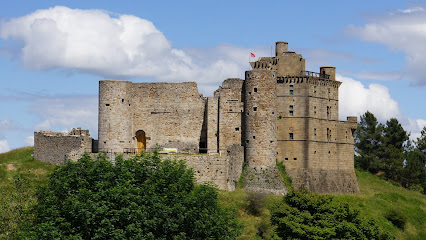
Château de Villerouge-Termenès
Discover the enchanting Château de Villerouge-Termenès, a medieval castle steeped in history and surrounded by stunning French countryside, perfect for all travelers.
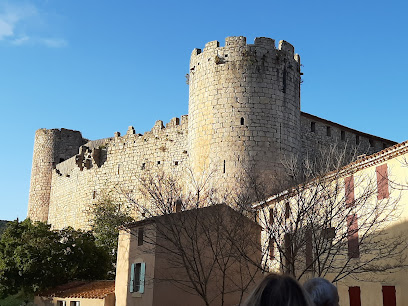
Unmissable attractions to see
Pont du Gard
Discover the breathtaking Pont du Gard, an ancient Roman aqueduct bridge blending history, stunning architecture, and beautiful natural scenery.

Les Halles de Narbonne
Explore Les Halles de Narbonne, a vibrant fresh food market showcasing local produce, gourmet delicacies, and the rich culinary heritage of Narbonne, France.
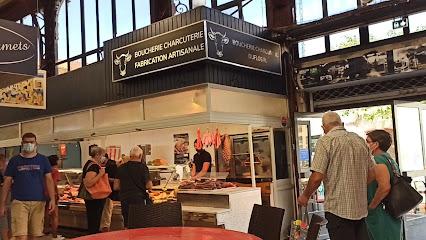
Les 9 Écluses de Fonseranes
Discover the stunning Les 9 Écluses de Fonseranes in Béziers, a historical engineering marvel of the Canal du Midi surrounded by breathtaking landscapes.
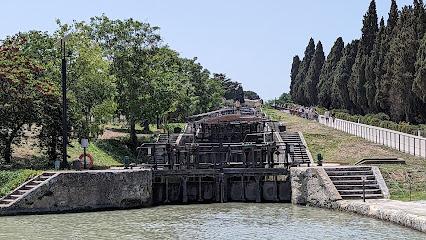
Haut-Languedoc Regional Natural Park
Explore Haut-Languedoc Regional Natural Park: a beautiful escape into nature, offering adventure, stunning landscapes, and rich cultural heritage in southern France.
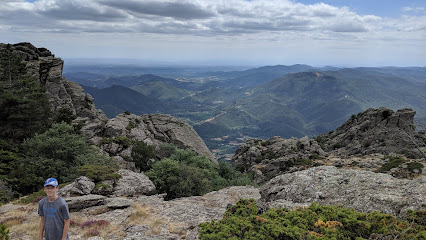
Clamouse cave
Uncover the stunning formations and rich history of Clamouse Cave, a captivating underground marvel in Saint-Jean-de-Fos, France.
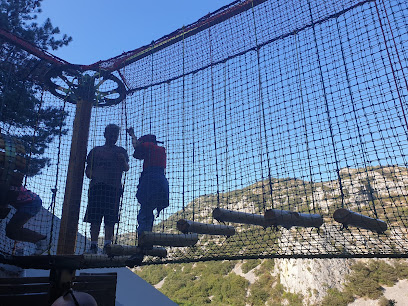
Gouffre Géant de Cabrespine
Explore the breathtaking Gouffre Géant de Cabrespine, a natural wonder filled with stunning rock formations and rich geological history in France.
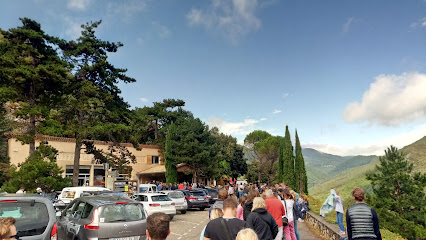
Château de Peyrepertuse
Discover the stunning Château de Peyrepertuse, a historical castle offering breathtaking views and a glimpse into medieval France's captivating past.
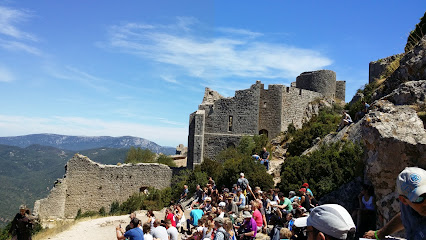
Château de Quéribus
Discover the breathtaking Château de Quéribus, a historic fortress in Cucugnan, offering panoramic views and a glimpse into the rich heritage of the Cathars.
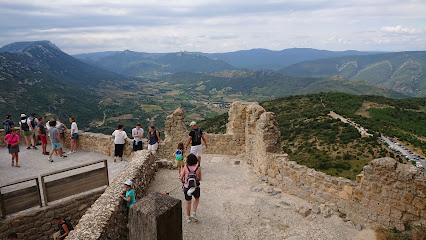
Gorges Heric
Discover the breathtaking beauty of Gorges d'Héric, a stunning hiking destination in Languedoc, France, surrounded by nature's tranquility.
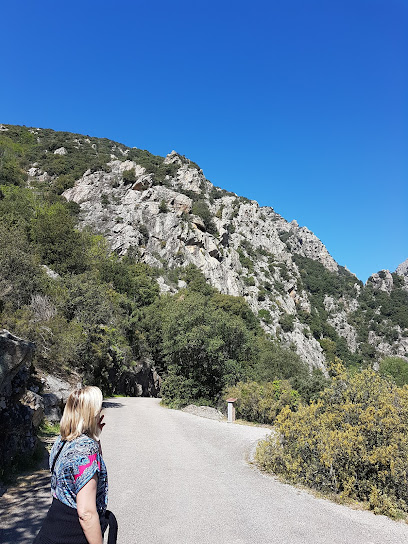
Caves of Trabuc
Uncover the natural wonders of the Caves of Trabuc in Mialet, France, featuring stunning rock formations and fascinating geological history.
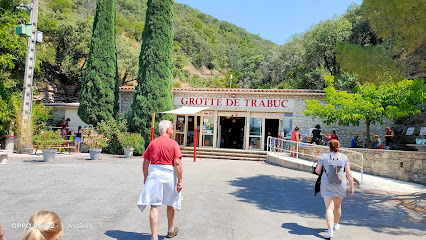
Grotte de Limousis
Discover the enchanting Grotte de Limousis, an underground marvel in France showcasing stunning geological formations and rich history.
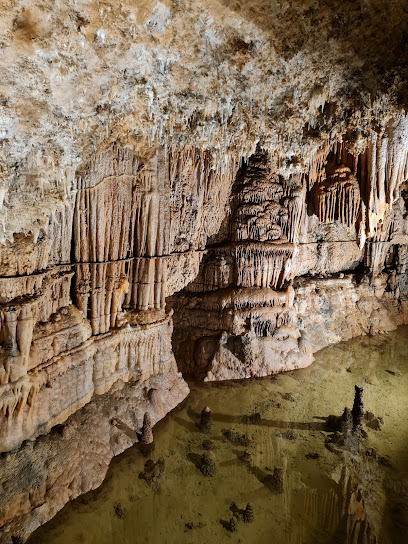
Centre historique
Explore the historic centre of Pézenas, where medieval charm meets vibrant culture in the heart of Languedoc, France.
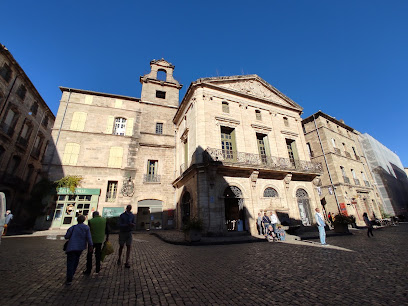
Chez Bebelle
Experience the vibrant flavors of Narbonne at Chez Bebelle, a top-rated bar and grill offering a delightful menu in a charming atmosphere.

Grotte De Dargilan
Explore the enchanting Grotte De Dargilan, a natural wonder in the heart of Cévennes, showcasing breathtaking geological formations and rich history.
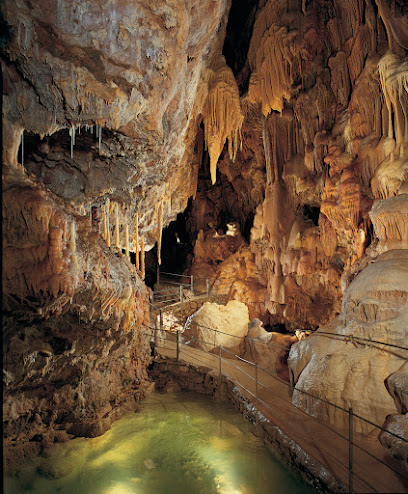
Grotte de Fontrabiouse
Discover the enchanting Grotte de Fontrabiouse, a stunning cave system in the French Pyrenees, filled with unique geological wonders and rich history.
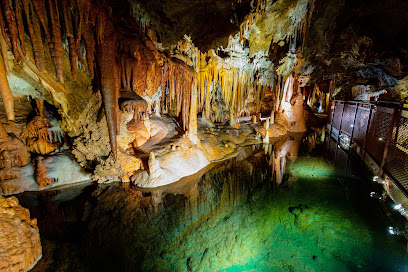
Essential places to dine
VIGATANE
Discover authentic Catalonian flavors at Vigatane in Canet-en-Roussillon - a must-visit tapas bar for every food lover.
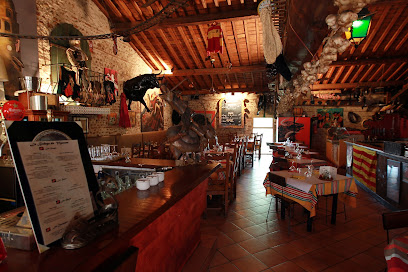
Auberge de la Croisade
Experience authentic French cuisine at Auberge de la Croisade in Cruzy - where every dish tells a story.
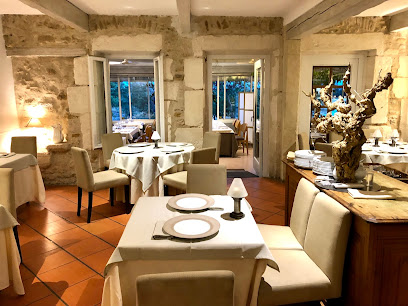
Auberge Du Lac
Experience authentic French cuisine at Auberge Du Lac in Le Puech – where every dish tells a story of local flavors.
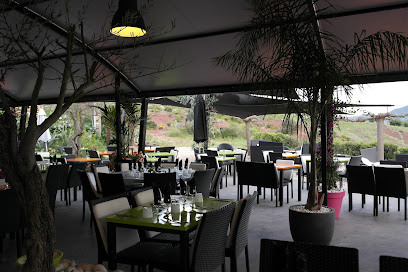
Le Tournesol
Discover Le Tournesol: A Culinary Gem Offering Authentic French Cuisine in Clermont-l'Hérault.
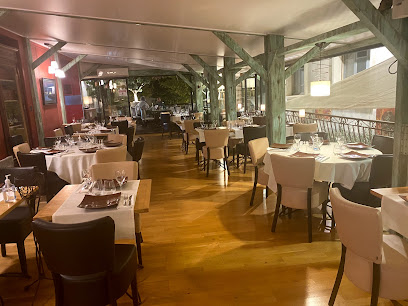
Auberge du Vieux Puits - Gilles Goujon
Experience exquisite French fine dining at Auberge du Vieux Puits in Fontjoncouse - where culinary artistry meets southern French charm.
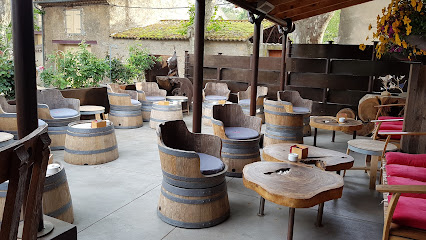
L'oustal fonzes - Le Cabanon
Experience exquisite French and Mediterranean cuisine at L'oustal fonzes - Le Cabanon in stunning Saint-Guilhem-le-Désert.
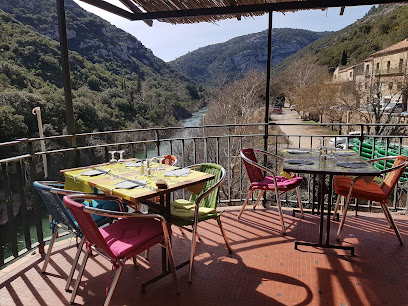
LE BOUCHON CATALAN
Savor traditional French cuisine at Le Bouchon Catalan in Canet-en-Roussillon – where every meal is a celebration of flavor.
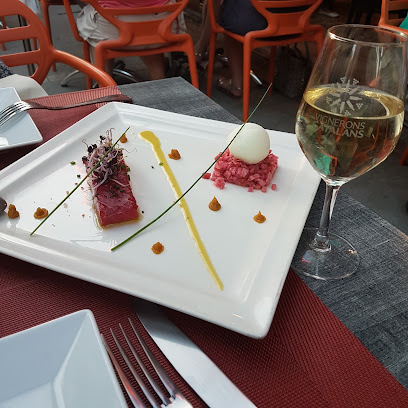
Restaurant L'Almandin
Discover exquisite haute French dining at Restaurant L'Almandin in Saint-Cyprien, where every dish tells a story of culinary artistry.
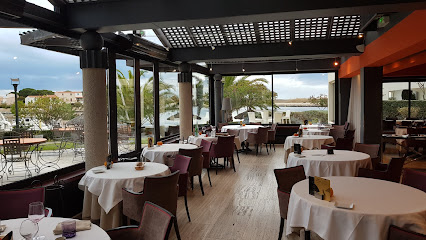
Auberge de Madale
Experience exquisite French cuisine at Auberge de Madale, where culinary artistry meets charming ambiance in Colombières-sur-Orb.
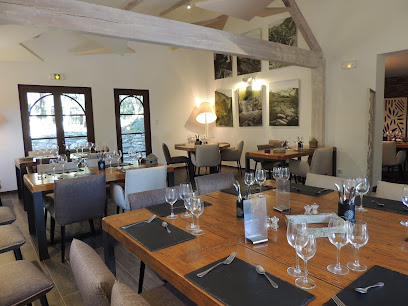
Le Pat'Daniel's
Discover the exquisite flavors of French and Mediterranean cuisine at Le Pat'Daniel's in Montpellier – a true culinary gem.
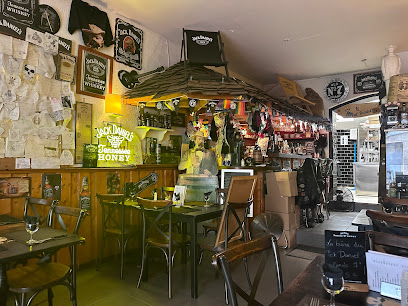
l'ambrosia
Discover exquisite French and Mediterranean cuisine at L'Ambrosia in Pezens—where every dish is a celebration of local flavors.
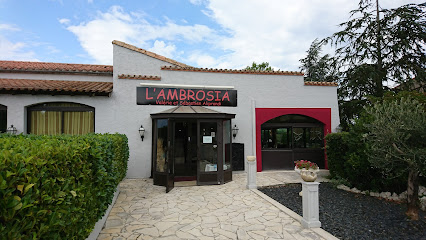
L’Art de la Flamme
Discover authentic French cuisine at L’Art de la Flamme in Mourèze – where each dish celebrates local flavors and culinary excellence.
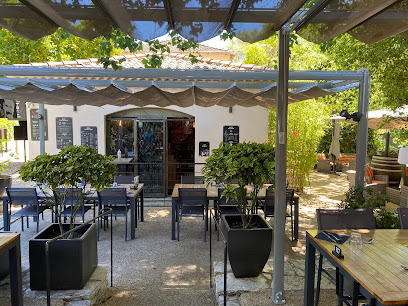
Pastis Restaurant
Experience the essence of French cuisine at Pastis Restaurant in Montpellier—where tradition meets culinary excellence.
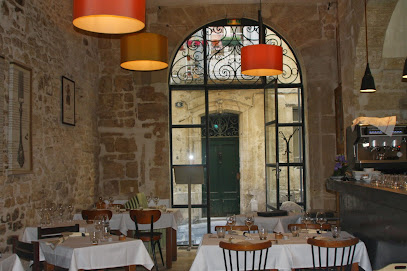
Crêperie Restaurant La Place
Experience authentic French cuisine at Crêperie Restaurant La Place in Canet – a delightful spot for crêpe lovers.

Restaurant Le Grand Minuscule
Discover exquisite French and Mediterranean cuisine at Restaurant Le Grand Minuscule in Lodève – a culinary delight waiting to be explored.

Markets, malls and hidden boutiques
Shopping Centre Odysseum
Discover the vibrant Odysseum Shopping Centre in Montpellier: shopping, dining, and entertainment for the perfect day out.
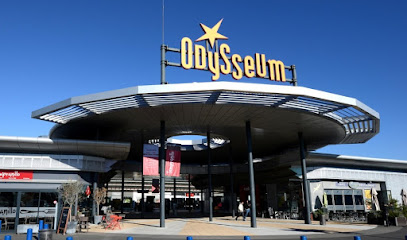
Centre Commercial Le Polygone
Discover the vibrant Centre Commercial Le Polygone in Montpellier, where shopping, dining, and entertainment come together in a modern atmosphere.
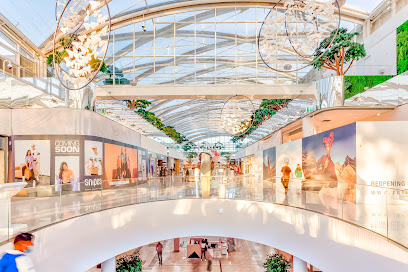
Polygone Béziers
Discover Polygone Béziers, where shopping meets leisure in a vibrant atmosphere filled with diverse stores and dining options.
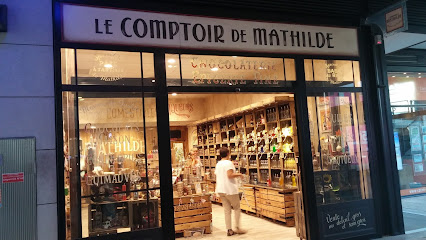
La Galerie - Géant Près d'Arènes
Explore the vibrant shopping scene at La Galerie - Géant Près d'Arènes, a must-visit destination in Montpellier, featuring diverse stores and delicious dining options.

La Galerie - Géant Salvaza
Discover La Galerie - Géant Salvaza, Carcassonne's premier shopping mall offering diverse stores, dining, and entertainment in a vibrant atmosphere.
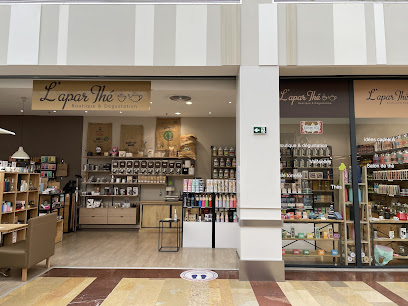
Pomme de Reinette et Pomme d'Api
Explore the whimsical world of toys at Pomme de Reinette et Pomme d'Api, a charming toy store in Montpellier filled with delightful surprises and unique finds.
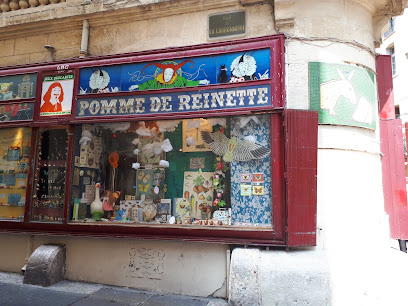
L’Atelier de la Peluche
Discover the enchanting L’Atelier de la Peluche in Montpellier - a magical toy store and thrilling escape room for the whole family to enjoy.
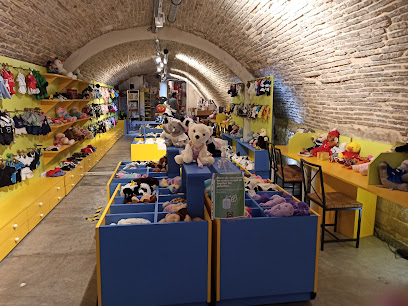
DO&KA Clermont-l'Hérault - Animalerie
Discover the ultimate pet paradise at DO&KA Clermont-l'Hérault, where every pet's needs are met with care and quality.
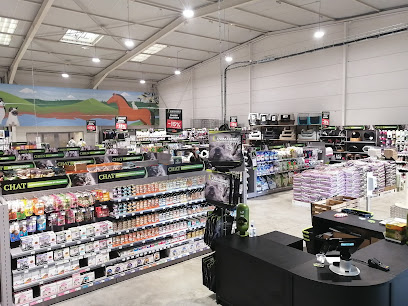
Galeries Lafayette - Corner Cosmoparis
Explore the essence of French fashion at Galeries Lafayette - Corner Cosmoparis, where style meets elegance in the heart of Perpignan.
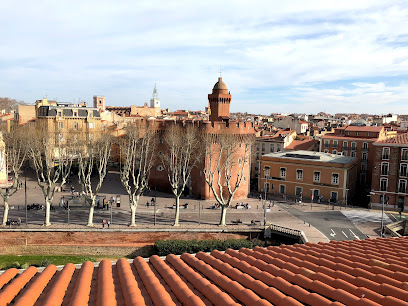
Komako
Experience the best of Clermont-l'Hérault shopping at Komako, where unbeatable prices meet a vast selection of quality products.
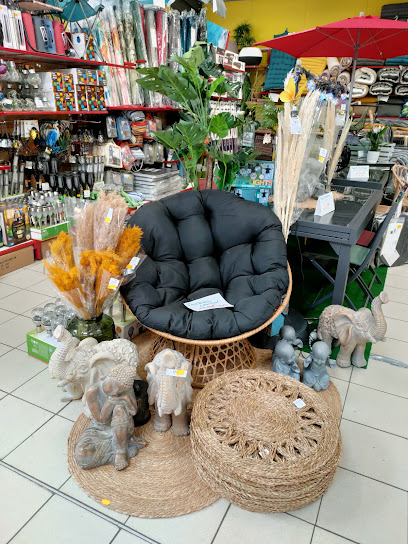
Les Francophones
Explore the latest mobile devices and expert repair services at Les Francophones, your essential tech stop in Le Bosc, France.
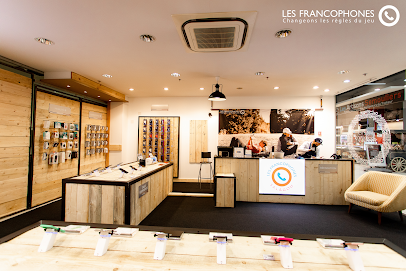
La Miellerie du Salagou
Experience the sweetness of nature at La Miellerie du Salagou, where honey and organic farming come together in a delightful journey.
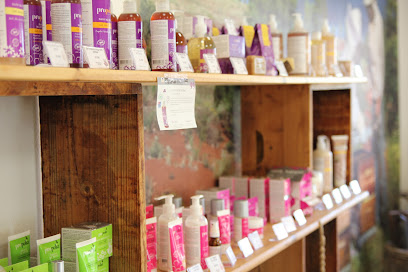
Paysans Producteurs
Explore the flavors of the Hérault region at Paysans Producteurs, a treasure trove of local natural goods and artisan products in Clermont-l'Hérault.
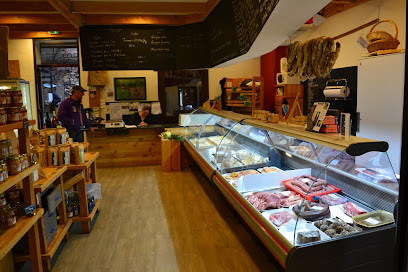
Au cadeau idéal
Experience the warmth of Lodève at Au Cadeau Idéal, your go-to tobacco shop for local products and unique gifts.
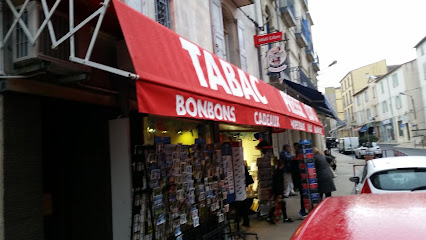
LA FEUILLE
Discover the charm of LA FEUILLE, Lodève's beloved bookstore, where literature meets community in a cozy atmosphere.
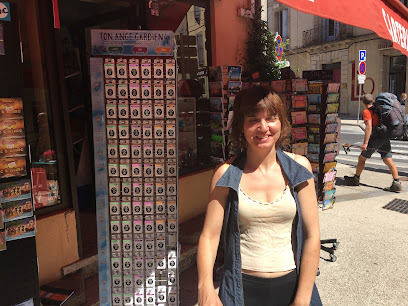
Essential bars & hidden hideouts
Fitzpatrick's Irish Pub
Discover the heart of Ireland at Fitzpatrick's Irish Pub in Montpellier, where hearty food, refreshing drinks, and vibrant sports unite for an unforgettable experience.
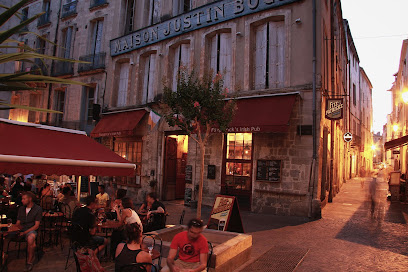
GAME TAVERNE - Bar à jeux & Cocktails
Discover the ultimate gaming and cocktail experience at GAME TAVERNE in Montpellier, where fun meets flavor in a vibrant atmosphere.

Le Parfum
Experience the ultimate fusion of Cantonese dining and exquisite cocktails at Le Parfum, Montpellier's premier cocktail bar and restaurant.
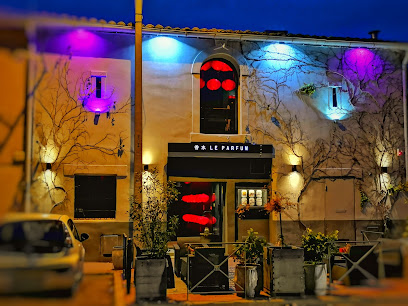
Le Rebuffy
Discover Le Rebuffy, a lively pub in Montpellier offering a vibrant atmosphere, diverse drink selections, and a perfect spot to unwind and socialize.
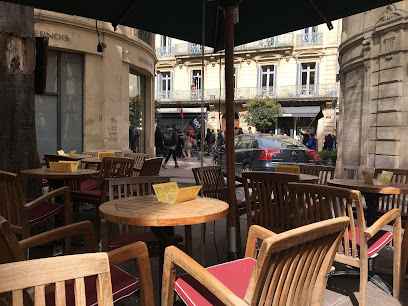
THE MUSTANG MONTPELLIER
Discover The Mustang Montpellier: A premier cocktail bar offering a stylish atmosphere and creative drinks in the heart of the city.

The Temple Bar
Discover the vibrant nightlife of Montpellier at The Temple Bar, where friendly faces and delicious drinks await in a lively pub atmosphere.
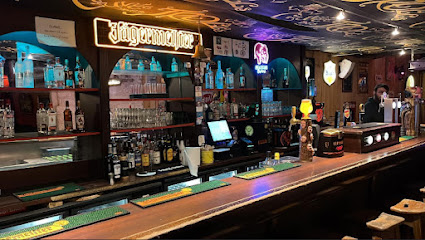
Black Out
Discover the lively spirit of Montpellier at Black Out, where exceptional drinks and a vibrant atmosphere await you for an unforgettable night.
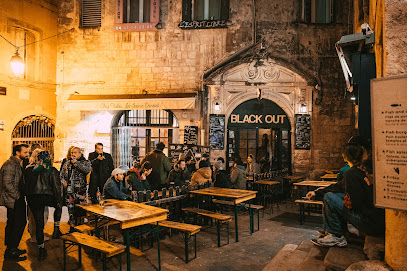
La Distillerie
Discover La Distillerie in Montpellier: A lively bar and restaurant offering exquisite drinks and delightful local cuisine in a vibrant ambiance.
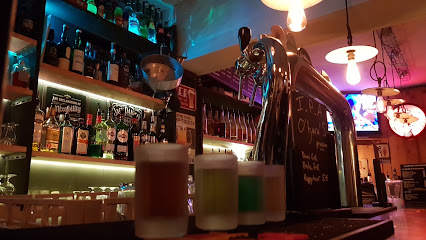
La Alhambra
La Alhambra: A lively bar in Montpellier offering a delightful mix of local drinks and vibrant nightlife.
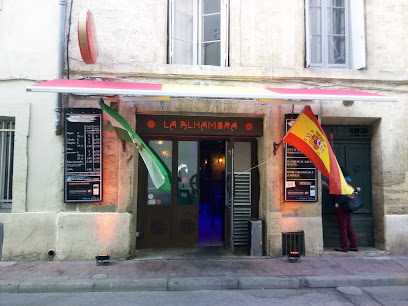
bambù bar
Experience vibrant nightlife at Bambù Bar in Canet-en-Roussillon, where delicious cocktails meet stunning seaside views.

Le Clandestin
Discover Le Clandestin, Montpellier's charming wine bar, offering exquisite selections and a cozy atmosphere for an unforgettable evening.
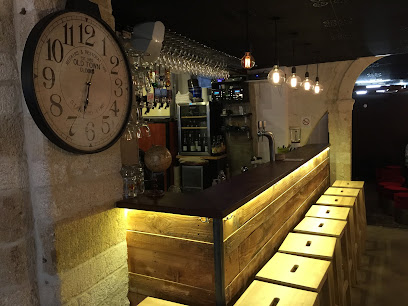
Los Parigos
Discover Los Parigos in Montpellier, a vibrant bar with a welcoming atmosphere and extensive drink selection, perfect for a night out.
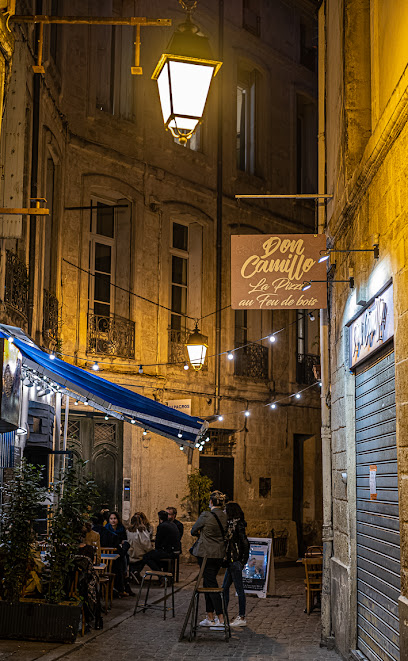
Irish Tavern
Immerse yourself in the lively atmosphere of the Irish Tavern, Montpellier's top spot for drinks, tapas, and unforgettable nightlife experiences.

Kraken bar
Discover Kraken Bar, Montpellier's premier cocktail bar, offering innovative drinks and a lively ambiance in the heart of the city.
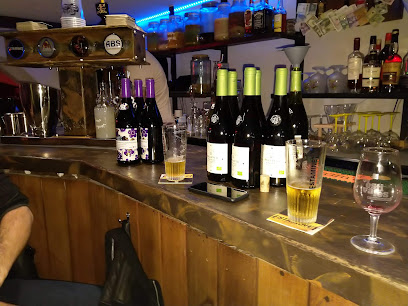
The Peacock
Experience the vibrant nightlife of Montpellier at The Peacock, a lively cocktail bar with great drinks, live music, and a fun atmosphere.

Local Phrases about Languedoc-Roussillon
-
- HelloBonjour
[bohn-zhoor] - GoodbyeAu revoir
[oh ruh-vwahr] - YesOui
[wee] - NoNon
[nohn] - Please/You're welcomeS'il vous plaît/De rien
[seel voo pleh/duh ryan] - Thank youMerci
[mehr-see] - Excuse me/SorryExcusez-moi/Désolé
[ehk-skew-zay mwah/dey-zoh-lay] - How are you?Comment ça va ?
[koh-mohn sah vah] - Fine. And you?Bien. Et vous ?
[byehn/eh voo] - Do you speak English?Parlez-vous anglais ?
[par-lay voo ahn-glay] - I don't understandJe ne comprends pas
[zhuh nuh kohm-prahnd pah]
- HelloBonjour
-
- I'd like to see the menu, pleaseJe voudrais voir le menu, s'il vous plaît
[zhuh voo-dray vwar luh meh-nyoo, seel voo pleh] - I don't eat meatJe ne mange pas de viande
[zhuh nuh mahnj pah duh vyand] - Cheers!Santé!
[sahn-tay] - I would like to pay, pleaseJe voudrais payer, s'il vous plaît
[zhuh voo-dray pay-yay, seel voo pleh]
- I'd like to see the menu, pleaseJe voudrais voir le menu, s'il vous plaît
-
- Help!Au secours !
[oh suh-coor] - Go away!Allez-vous en !
[ah-lay vooz ahn] - Call the Police!Appelez la police !
[ah-peh-lay lah poh-lees] - Call a doctor!Appelez un docteur !
[ah-peh-lay uh dohk-tuhr] - I'm lostJe suis perdu
[zhuh swee pair-doo] - I'm illJe suis malade
[zhuh swee mah-lahd]
- Help!Au secours !
-
- I'd like to buy...Je voudrais acheter...
[zhuh voo-dray ah-shet-ay] - I'm just lookingJe regarde juste
[zhuh ruh-gahrd zhoost] - How much is it?Combien ça coûte ?
[kohm-byen sah koot] - That's too expensiveC'est trop cher
[say troh shehr] - Can you lower the price?Pouvez-vous baisser le prix ?
[poo-veh voo bay-say luh pree]
- I'd like to buy...Je voudrais acheter...
-
- What time is it?Quelle heure est-il ?
[kehl uhr ay eel] - It's one o'clockIl est une heure
[eel ay oon uhr] - Half past (10)Dix et demi
[dees ay duh-mee] - MorningMatin
[mah-tan] - AfternoonAprès-midi
[ah-pray mee-dee] - EveningSoir
[swahr] - YesterdayHier
[yehr] - TodayAujourd'hui
[oh-zhoor-dwee] - TomorrowDemain
[duh-mahn] - 1Un
[uhn] - 2Deux
[duh] - 3Trois
[twah] - 4Quatre
[kah-truh] - 5Cinq
[sank] - 6Six
[sees] - 7Sept
[sept] - 8Huit
[weet] - 9Neuf
[nuff] - 10Dix
[dees]
- What time is it?Quelle heure est-il ?
-
- Where's a/the...?Où est...?
[oo ay] - What's the address?Quelle est l'adresse?
[kehl ay lah-dress] - Can you show me (on the map)?Pouvez-vous me montrer (sur la carte)?
[poo-veh voo muh mohn-tray (soor lah cart)] - When's the next (bus)?Quand est le prochain (bus)?
[kahnd ay luh proh-shay (boos)] - A ticket (to ....)Un billet (pour ....)
[uhn bee-yay (poor)]
- Where's a/the...?Où est...?
History of Languedoc-Roussillon
-
Languedoc-Roussillon's history dates back to ancient Roman times when the region was known as Gallia Narbonensis. The Romans established the city of Narbonne in 118 BC, making it the first Roman colony in Gaul. The Via Domitia, a major Roman road, was constructed to connect Italy with Spain, passing through this region and facilitating trade and cultural exchange. Roman architectural marvels like the Pont du Gard, a well-preserved aqueduct, and the ancient city of Nîmes with its amphitheater, still stand as testaments to this era.
-
In the 12th and 13th centuries, Languedoc-Roussillon became a center for the Cathar movement, a Christian dualist or Gnostic revival that the Catholic Church deemed heretical. This led to the Albigensian Crusade (1209-1229), a brutal campaign initiated by Pope Innocent III to eliminate Catharism. The fortified city of Carcassonne and the Château de Montségur are key historical sites where significant battles took place. The crusade had a lasting impact on the region, leading to the integration of Languedoc into the French Crown and the establishment of the Dominican Order.
-
During the Middle Ages, Languedoc-Roussillon thrived as a region of prosperous market towns. The walled city of Aigues-Mortes, founded by King Louis IX in the 13th century, served as a departure point for the Seventh and Eighth Crusades. The town of Pézenas became a bustling commercial hub, known for its fairs and markets that attracted merchants from across Europe. These towns were often characterized by their grand marketplaces, Gothic cathedrals, and intricate townhouses, many of which still stand today.
-
In 1659, the Treaty of the Pyrenees was signed, ending the Franco-Spanish War (1635–1659) and significantly altering the political landscape of Languedoc-Roussillon. The treaty resulted in the cession of Roussillon and northern Catalonia from Spain to France, integrating these territories into what is now the Pyrénées-Orientales department. This event marked the end of centuries of conflict between France and Spain over these borderlands and heralded a new era of peace and prosperity for the region.
-
Languedoc-Roussillon has a long history of viticulture, but it was in the 19th and 20th centuries that the region underwent a significant transformation known as the Wine Revolution. The introduction of the railway system allowed local winemakers to export their products more efficiently, leading to an economic boom. However, the region also faced challenges such as the phylloxera epidemic that devastated vineyards in the late 19th century. Today, Languedoc-Roussillon is one of France's largest and most diverse wine-producing areas, known for its innovative approaches and a wide variety of wine styles.
-
In recent decades, Languedoc-Roussillon has experienced a modern cultural renaissance that has revitalized its towns and cities. Montpellier, the region's capital, has become a vibrant center for arts, education, and innovation, attracting students and professionals from around the world. The restoration of historical sites, coupled with the promotion of cultural festivals such as the Festival de Carcassonne and the Feria de Nîmes, has helped to preserve and celebrate the region's rich heritage while embracing a dynamic and forward-thinking future.
Languedoc-Roussillon Essentials
-
Languedoc-Roussillon is accessible by various means of transport. The region is served by several airports including Montpellier-Méditerranée, Béziers Cap d'Agde, Carcassonne, and Perpignan-Rivesaltes, offering both domestic and international flights. High-speed trains (TGV) connect Paris to Montpellier, Nîmes, and Perpignan, with connections to other cities in the region. The region is also well-connected by major highways, making it accessible by car.
-
Within Languedoc-Roussillon, public transportation includes regional trains (TER), buses, and trams, particularly in larger cities like Montpellier. Car rental services are widely available and provide flexibility for exploring more remote areas. Bicycles are also a popular mode of transport, especially in the countryside and along the coast. Taxis and rideshare services like Uber operate in urban areas.
-
The official currency in France is the Euro (EUR). Credit and debit cards are widely accepted in most establishments, but it’s advisable to carry some cash for smaller businesses and rural areas. ATMs are readily available in cities and towns. Currency exchange services can be found at airports, major train stations, and in city centers.
-
Languedoc-Roussillon is generally a safe region for tourists. However, as with any travel destination, it is important to take standard precautions. Areas around train stations and busy tourist spots can be prone to pickpocketing. Avoid walking alone at night in unfamiliar areas. High-crime neighborhoods are rare, but it’s wise to stay vigilant and aware of your surroundings.
-
In case of an emergency, dial 112 for immediate assistance. This number works for police, medical emergencies, and fire services. Major cities in Languedoc-Roussillon have hospitals and medical facilities. Pharmacies are widely available for minor health issues and over-the-counter medications. It is advisable to have travel insurance that covers medical emergencies.
-
Fashion: Do dress smart-casual, especially when dining out. Avoid overly casual attire in more formal settings. Religion: Do respect local customs, especially when visiting religious sites. Dress modestly and behave respectfully. Public Transport: Do validate your ticket before boarding trains and buses. Don’t eat or drink on public transport. Greetings: Do greet people with a 'Bonjour' (Good day). A handshake is common among acquaintances. Eating & Drinking: Do try local wines and cuisine. Don’t expect to rush through meals; dining is considered a leisurely activity.
-
Experience Languedoc-Roussillon like a local by visiting local markets such as the Marché des Arceaux in Montpellier for fresh produce and regional specialties. Engage with locals in small towns; they are often very welcoming and willing to share their culture. Don’t miss the local wines; the region is famous for its vineyards. For a unique experience, explore the Canal du Midi by boat or bicycle.
Trending Landmarks in Languedoc-Roussillon
-
Cité de Carcassonne
-
Pont du Gard
-
Jardin de La Fontaine
-
Haut-Languedoc Regional Natural Park
-
Royal Castle of Collioure
-
Salses Fortress
-
Château de Peyrepertuse
-
Château de Quéribus
-
Les Quatre Châteaux de Lastours
-
Castle Castelnou
-
Château L'hospitalet Wine Resort Beach & Spa
-
Château et remparts de la cité de Carcassonne
-
Château de Puilaurens
-
Portes Castle
-
Château de Villerouge-Termenès
Nearby Cities to Languedoc-Roussillon
-
Things To Do in Nîmes
-
Things To Do in Avignon
-
Things To Do in Toulouse
-
Things To Do in Pas de la Casa
-
Things To Do in Soldeu
-
Things To Do in Marseille
-
Things To Do in Canillo
-
Things To Do in Aix-en-Provence
-
Things To Do in El Serrat
-
Things To Do in Ordino
-
Things To Do in Encamp
-
Things To Do in Girona
-
Things To Do in La Massana
-
Things To Do in Arinsal
-
Things To Do in Escaldes-Engordany













